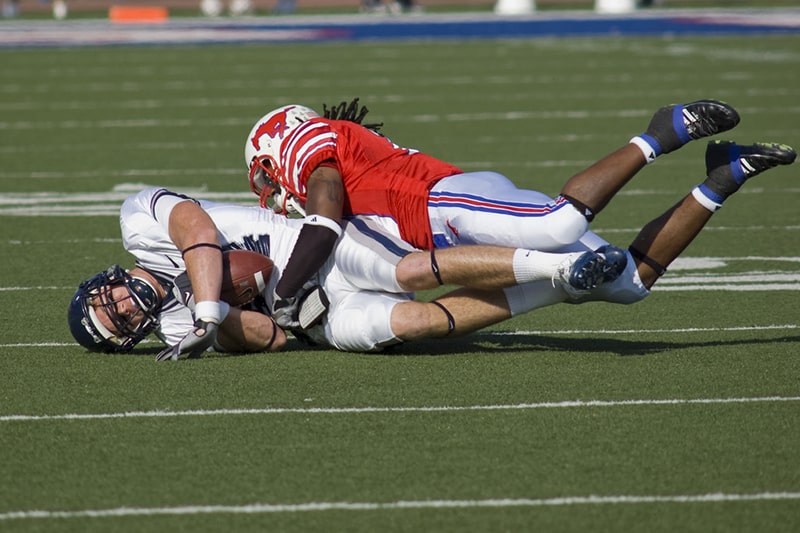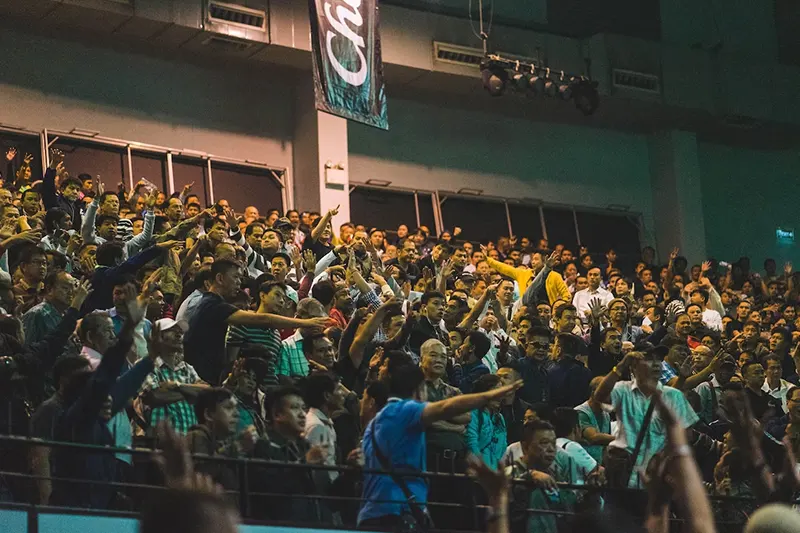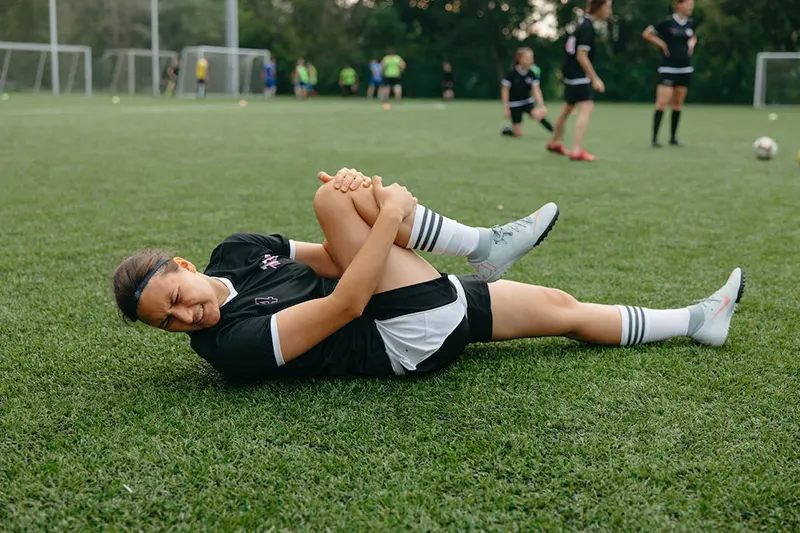A concussion is one of the most common injuries in the NFL and American football. According to statistics, around 0.41 concussions occur per NFL game. Of these, 67.7% of concussions result from contact with another player’s helmet, while 20.9% occur due to impacts to other body regions. Additionally, about 11.4% of concussions involve impact with the ground.
As concussion includes head injury, when a player suffers from the same, they are likely to remain out of the match.
But for how long? Well, it depends. The NFL has come up with a concussion protocol, to be more particular. Here’s more to it:
What Does Concussion Protocol in the NFL Mean?
The NFL’s concussion protocol goes back to the year 2011 when the Head, Neck, and Spine Committee of the league came up with the NFL Game Day Concussion Diagnosis and Management Protocol. Here’s what the protocol includes:
- A player is included in the protocol if he shows signs or symptoms of concussion/stinger.
- The members like booth ATC, Athletic Trainers, NFL game officials, teammates, sideline UNC (Unaffiliated Neurotrauma Consultant), or booth UNC starts/initiates the protocol.
The player is checked for any symptoms of concussions once he gets injured. If he is diagnosed with a concussion, he is removed from the game instantly. Likewise, if he passes the exam, he may return but will be monitored for certain symptoms. This includes the following:
- Blank look
- Lack of consciousness
- Problem with motor coordination and balance
- Getting up slow after getting hit on the head
- Unawareness of the nearby surrounding
- Facial injury
- If the player clutches head after the contact
How Long is the Concussion Protocol Applicable to the Player?
If a player suffers from a concussion and wants to return to play after recovery, then he has to follow a “Return-To-Participation Protocol”. This should be organized by the respective NFL organization, and the protocol process must include the following steps:
- Rest and Recovery: The injured player is removed from all team activities, social media, and even electronic devices. They are said to remain focused on simple physical activities.
- Light Aerobic Exercise: The player should participate in light aerobic exercises like riding a stationary bike or working on a treadmill for about 10-20 minutes every day. This should be monitored by a trainer to see if any concussive symptom shows up.
- Continuous Aerobic exercise and strength training: The player can participate in cardiovascular work with a trainer to look for any behavioural signs.
- Football Specific Exercise: The player can try out non-contact football activities for an entire practice.
- And lastly, the Full football activity/clearance.
Note that the end step, i.e. the full football activity or clearance, is quite important, and it should be done by an acclaimed club physician. In this step, the player is given a green signal by both the club physician and the independent Neurological Consultant of the team.
Here both the independent physician and the team must agree for the player to return to practice or to the gameplay/match.
A player under concussion protocol can only return to practice in the first practice of the week if they have been denied a concussion. However, concussion protocol could also be applied to them as late as the game day.
Meanwhile, if a player is removed or restricted from practice on midweek injury reports, it will be considered one of the steps of the protocol process. They might be able to play or participate in the following game.
That’s it. Hopefully, now you know for how long a player remains out of the game with a concussion.






